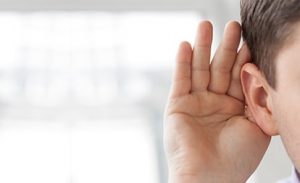Please view our glossary of possible hearing tests that may be used to asess your level of hearing. These include:
- Pure tone
- Speech tests
- Tympanometry
- Video-otoscopy
Test: Pure tone
What is pure tone audiometry?
Pure tone audiometry is a behavioural hearing test that is designed to measure the severity and balance (unilateral or bilateral) of a person’s hearing loss. A hearing care professional or audiologist is the best provider to administer this test. The results are recorded on an audiogram; they will show the participant’s pure tone threshold (PTT), namely, the quietest sound that can be heard at least 50 percent of the time. To put it simply, on completion of this test, your hearing care provider will be able to tell you if and to what degree of hearing loss you are suffering with and whether it affects one or both of your ears.
Degrees of hearing loss
Mild (26-40dB):
People with mild hearing loss can usually cope without the use of hearing aids. They may find that their hearing loss causes them to lose focus on events around them, or cause tiredness after long periods of attentive listening. There may also be some difficulty in understanding softly spoken speech.
Moderate (41-55dB):
Moderate hearing loss can affect language development if experienced from childhood. This level of hearing loss has also been associated with social problems and low self-esteem. People who suffer with moderate hearing loss may have trouble hearing some conversational speech.
Moderate-severe (56-70dB):
People with this degree of hearing loss do not hear most normal-volume speech in a conversational setting. They may also suffer from slightly decreased clarity of speech as a result of their hearing loss.
Severe (71-90dB):
People with severe hearing loss will not be able to hear even loudly spoken conversation. They will almost certain have trouble with clarity of speech, depending on and at what age their hearing loss developed.
Profound (>90dB):
Inability to hear sound of any level.
What does the test entail?
Pure tone testing is a completely painless procedure. During the test you will be asked to sit in a soundproof room or booth to prevent any background noise interfering with the test results. The test administrator will give you a pair of head phones or ear inserts to wear through which sounds of varying frequencies and volumes will be played through into both ears individually and you will be asked to signal whenever you can hear a sound, usually by pressing a button or raising your hand – it’s as simple as that!
This test is usually the first port of call for hearing care providers when they are assessing new patients. While pure tone audiometry can give a very accurate measurement of hearing loss, it cannot shed any light on the type or cause of your hearing loss, so your hearing care provider may want to run additional hearing tests.
Test: Speech tests
Speech tests are conducted using word lists which are played to the test subject by the hearing care provider and the responses recorded to see how many correct words are scored. There are various tests but the most widely used are AB word lists. The AB short word list test first devised by Arthur Boothroyd in 1968, is widely used in the UK as a speech recognition test and for rehabilitation. The BKB (Bamford-Kowal-Bench) Sentence Lists are often used with partially hearing children and as with the AB word lists are performed to determine speech discrimination.
Another test is a speech in noise test where correct words in a sentence is scored with an ever-increasing background noise. This can be performed relatively quickly and easily in pre-recorded sentences in noise known as Quicksin. All the speech and word lists tests are designed to measure speech discrimination and can be used to demonstrate the efficacy of a hearing aid.
Test: Tympanometry
A tympanogram is a graphic representation of the relationship between the air pressure in the ear canal and the movement of the eardrum, or tympanic membrane, and the tiny bones in the air-filled middle ear space. When the eardrum is disturbed by a sound, part of the sound is absorbed and sent through the middle ear while the other part of the sound is reflected. The information derived from tympanometry provides additional information regarding middle ear function, especially Eustachian tube function.
How tympanometry is performed
Tympanometry can be performed either by hearing care provider or audiologist.
The clinician will do a visual inspection of your ear canal and eardrum using a lighted scope (otoscope) placed in the ear. Then, a probe with a flexible rubber tip will be placed in your ear. The probe will cause the air pressure in your ear canal to change as you hear some low-pitched tones. The feeling can be quite like the pressure changes felt during take-off and landing when you’re on a plane. While the pressure is changing, measurements of your eardrum’s movement will be taken and recorded.
Additionally, to tympanometry measurements further acoustic reflex measurements may be taken. Acoustic reflexes measure the stapedius and the tensor tympani reflex generated eardrum movement in response to intense sound. They can be helpful in checking for particular types of hearing loss in situations where patient reliability is questionable. They also occasionally point to central nervous system pathology.
Test: Video-otoscopy
Video-otoscopy is performed by using a small video camera inserted in the entrance of the ear canal to check the health and structure of the ear canal and ear drum. It is a very useful tool as it highly illuminates and magnifies the area for observation and the results can be recorded for future reference or for comparisons to any change in the physiology of the outer ear. It is also a very useful aid to discuss with the patient as they are able to see their own ear structure and be involved in the diagnostic journey.


